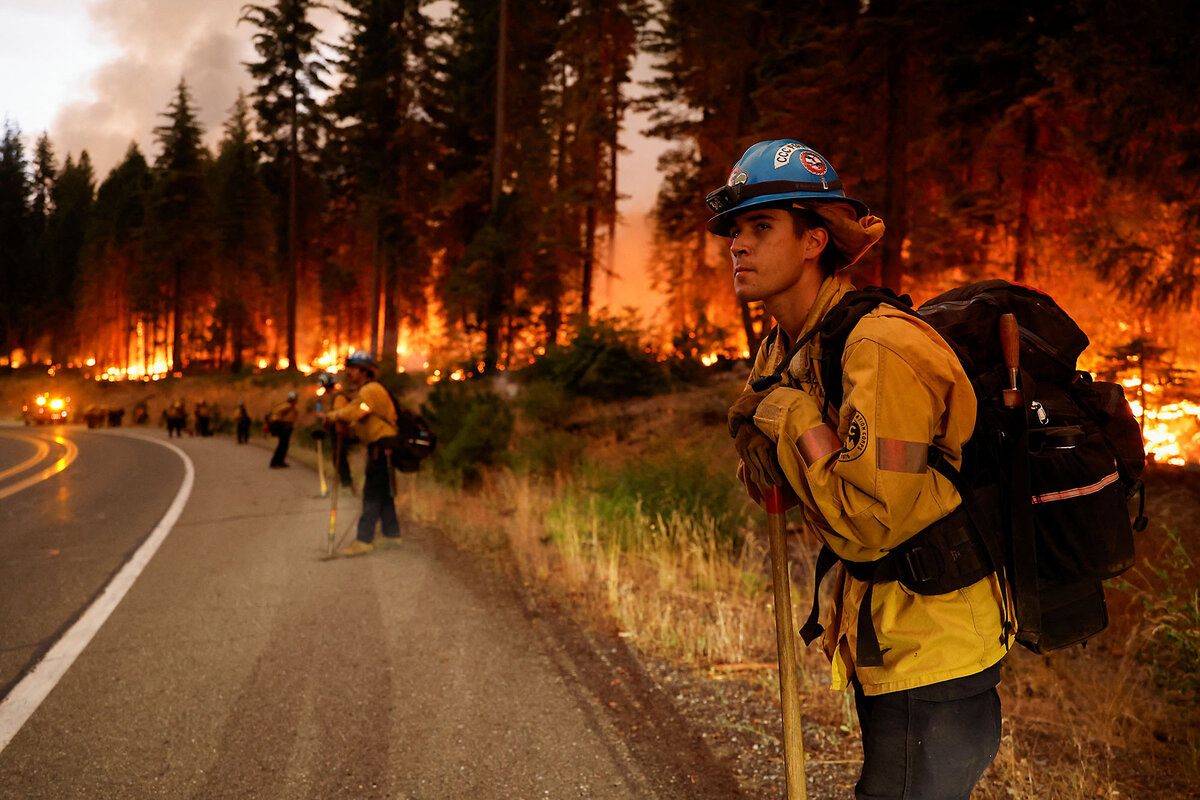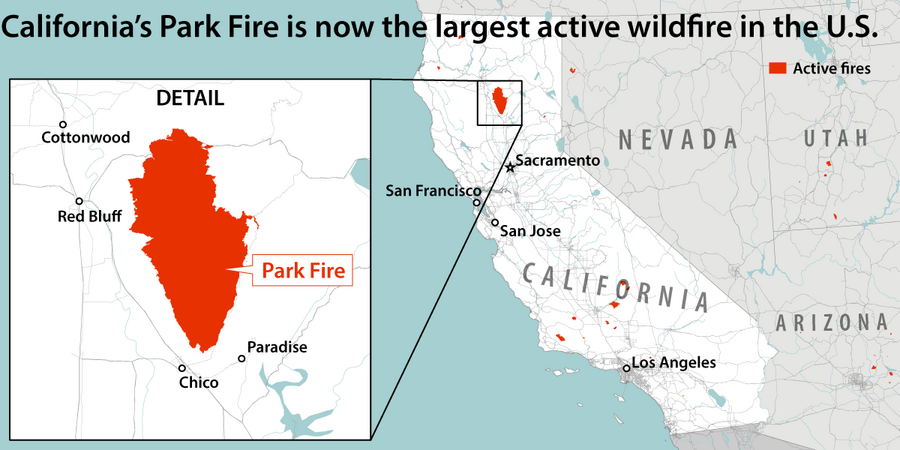California is wrestling with a giant wildfire in a year that’s already seen five times the annual average of acres burned in the state. Solutions may require changes in strategy and expectations.
Monitor Daily Podcast
- Follow us:
- Apple Podcasts
- Spotify
- RSS Feed
- Download
 Mark Sappenfield
Mark Sappenfield
Today, we offer you a cow in a box. Not as a Christmas present. But in Stephanie Hanes’ story about how scientists are trying new things to understand the potent greenhouse gas produced by cows.
The study is more than just a curiosity. Yes, the photo does look like some sort of deepfake bovine Marvel film. But the story behind it speaks to a crucial ingredient in any attempt to conquer climate change: innovation. And sometimes, it seems, that means thinking inside the box. With a cow.
Help fund Monitor journalism for $11/ month
Already a subscriber? Login
Monitor journalism changes lives because we open that too-small box that most people think they live in. We believe news can and should expand a sense of identity and possibility beyond narrow conventional expectations.
Our work isn't possible without your support.
Today’s stories
And why we wrote them
( 4 min. read )
Today’s news briefs
• Supreme Court proposal: President Joe Biden unveils a long-awaited proposal for changes at the U.S. Supreme Court, calling on Congress to establish term limits and an enforceable ethics code for the court’s nine justices.
• Venezuela election: Venezuelan President Nicolás Maduro is formally declared the winner of his country’s disputed presidential election, handing him a third six-year term.
• U.S. interest rates: One year after leaving its benchmark interest rate at a near-quarter-century high, the Federal Reserve is expected to signal this week that it will likely reduce borrowing costs as soon as September.
• France vandalism: The French government says multiple telecommunications lines have been hit by acts of vandalism, affecting fiber lines and fixed and mobile phone lines as cities across France are hosting events for the 2024 Paris Olympics.
The Explainer
( 6 min. read )
As Vice President Kamala Harris launches her presidential bid, opponents link her to unpopular Biden administration border policies. We untangle the debate over her immigration tasks.
( 5 min. read )
Previous generations of Olympic athletes were expected to perform with smiles on their faces, even when dealing with physical pain, mental trauma, or outright abuse. Today’s athletes are more open about their battles, and say that honesty about mental health has led to a better balance in their lives.
( 5 min. read )
Methane is one of the world’s most powerful greenhouse gases — and cows are a significant source of methane. Researchers are exploring ways to manage this natural phenomenon.
Difference-maker
( 4 min. read )
Poland has been a historically large producer and consumer of coal for heating homes. Worried about the smog that results, one resident has united Poles to cut back on the fuel.
The Monitor's View
( 2 min. read )
The most popular book in Ukraine last year was the fictional thriller “I See You Are Interested in Darkness.” It is written by a former soldier, Illarion Pavliuk, and explores the indifference to both personal and social sins. After the Russian invasion in 2022, the book became popular because, as one reviewer put it, “indifference was no longer an option.”
Fighting a war for their survival has turned many Ukrainians into avid book readers, eager to find solace, freedom, wisdom, or, perhaps, empathy. They are aware of Russian forces trying to wipe out Ukrainian culture by, for example, destroying more than a hundred libraries.
In May, the country’s largest printing house, Factor Druk, was badly damaged by Russian missiles. Donors quickly pledged to restore the book publisher. President Volodymyr Zelenskyy likened the attack to events in Ray Bradbury’s 1953 dystopian novel “Fahrenheit 451,” the temperature at which book paper ignites. Since the invasion, more than one hundred books have been printed for children to help them cope with the war’s trauma. The number of bookstores has expanded significantly. From May 30 to June 2, the country’s annual book festival in Kyiv drew 35,000 visitors, up from 28,000 last year.
The war has provoked a period of soul-searching and steered many in Ukraine to rethink their identity, Oleksiy Erinchak, an entrepreneur who founded a bookstore in Kyiv, told Radio Free Europe/Radio Liberty. In particular, said Yulia Kozlovets, the book festival’s director, “the war has ultimately liberated Ukrainian culture from an inferiority complex” stemming from a historic preference for Russian literature.
Liberation for Ukraine is happening on more than just the military front lines. It is also a mental struggle to be free of fear and full of faith in Ukraine’s cultural independence.
Another popular book last year was “The Story of a Stubborn Man,” written by a former commander, Oleksandr Budko. He is a young war hero who lost both legs in battle. This fall, he will be on Ukraine’s version of the reality TV show “The Bachelor.” During the book festival, he was mobbed by young women who loved his book about coping with his tragedy and finding his hope in Ukraine’s victory.
Reading books has given Ukrainians a powerful tool for dealing with indifference to evil.
A Christian Science Perspective
Each weekday, the Monitor includes one clearly labeled religious article offering spiritual insight on contemporary issues, including the news. The publication – in its various forms – is produced for anyone who cares about the progress of the human endeavor around the world and seeks news reported with compassion, intelligence, and an essentially constructive lens. For many, that caring has religious roots. For many, it does not. The Monitor has always embraced both audiences. The Monitor is owned by a church – The First Church of Christ, Scientist, in Boston – whose founder was concerned with both the state of the world and the quality of available news.
( 4 min. read )
Recognizing and building on what’s good – rather than tearing things down – is a powerful way to contribute to the world around us, and we all have the God-given ability to do this.
Viewfinder
A look ahead
Thank you for joining us today. Please come back tomorrow when Henry Gass looks at President Joe Biden’s proposal to reform the Supreme Court. What would those changes look like in practice, and what could they mean for the court?










